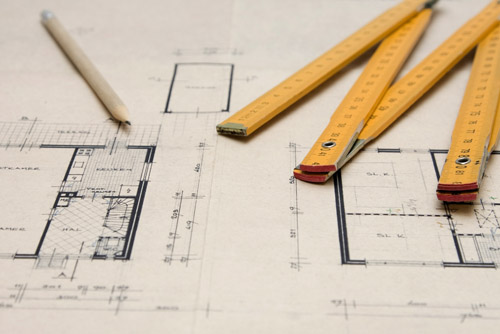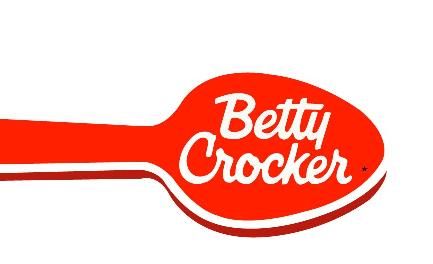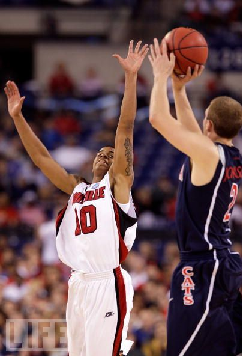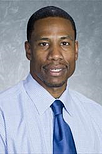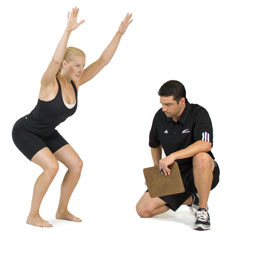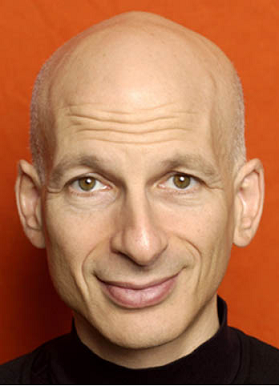(An intemperate look at barbell-centric training)
by Steve Myrland
“Get out of the weight-room boys. I don’t need you weight-room strong . . . I need you farm-strong.”
Irving “Boo” Shexnayder
LSU Track & Field Coach
(to his team)
Perhaps the most persistent blunder athletes and coaches make in training to compete is regularly mistaking “strength” for “athleticism,” so let’s clear this up right away: Athleticism—the ability to express one’s physical self with optimal speed, agility, strength, balance, suppleness, stamina and grace while avoiding injury—is the goal. Strength, as you will note by re-reading the sentence, above, is a single element of the collective term: athleticism. You cannot be athletic without being strong; but you can be strong without being athletic.
Peek into any high school weight-room and you will see big, slow guys lifting weights under the misguided notion that strength is the holy-grail. It isn’t. Big strong guys are a dime-a-dozen. Big strong guys who can move get recruited . . . get scholarships . . . get drafted . . . get rich. Therefore, the strength you create in training must necessarily be strength that augments the whole, rather than constrains it. It must be athletic strength; that is, it must always promote better movement.
Strength and stamina are among the easiest athletic qualities to improve—provided you disconnect both from all other athletic qualities (speed and agility, for instance). Absent any connection to those genuine game-breakers, it is not at all difficult to create stronger muscles and bodies that are conditioned to work for longer and longer periods of time. Creating better athletes, however—athletes that are able to project the qualities most rewarded in competition—requires a more refined approach to training.
In the quest for athletic strength, the lines of the argument are generally drawn between the free-weight advocates and the health-club machine crowd. I tend to fall in with the free-weight folks in this but such a simplistic line of separation gives a free pass to one particular piece of equipment that is every bit as non-functional as any chrome-plated, stack-loaded, one-plane-wonder health-club machine: the barbell.
On a “functional continuum” of training equipment, I would place machines well down towards the non-functional end of things and I would place the venerable Olympic bar right next to them, even though it sails under the free-weight banner.
Here’s why: When you grab hold of a barbell with both hands, you are virtually locking yourself into the sagittal plane. Movement in the other two available planes of motion, frontal and transverse, is theoretically possible, but it is unlikely, at best; and if you are doing a traditional barbell exercise (squat, deadlift, snatch, clean, bench press) your body will do all it can to minimize any potential movement in those two unwanted planes. Effectively, the bar locks you into one plane and out of two. It restricts—not unlike health-club machinery.
Unfortunately, the neural patterning that results from this kind of training is decidedly unfriendly to a body that will be regularly required—in competition and life—to move; to react, stop, start, twist, generate speed and withstand impact. Strength-training programs based primarily on barbell lifts do a poor job of preparing bodies for the competitive environment because they “teach” the body to be stiff and unyielding—brittle—rather than strong and supple.
If you think of the spine as a length of chain, with each link making its individual contribution to movement in three planes, you get a sense of what a wonderfully elegant, supple design the human spine is. If several links in that chain are (effectively) fused together, all flexion, extension, leaning and rotation that would normally come from those links will necessarily be handed on to the nearest available segment of the chain where the links are still able to move.
Moreover, with the exception of back-squats, a barbell puts the resistance on the front of the body, contributing to the development of shoulders that round forward. This front-emphasis affects all bodies differently because of individual differences in lever-lengths (arms, legs and torsos). Big-chested, short-armed power-lifters always have the advantage when it comes to bench-pressing. Short-legged, short torso, long-armed lifters make the best squatters and deadlifters.
Barbells are an insult to the inherent “uniqueness” of human beings. A bar treats all bodies as if they were the same by limiting things to the sagittal plane and by requiring loads to be carried either in front or behind, not where an individual’s own center-of-gravity is optimized. This requires all manner of nasty postural compensations that are directly or indirectly related to many athletic deficiencies and (even) injuries. After all: a barbell is designed to accommodate the load rather than the lifter; while dumbbells and other similar resistance tools both require and allow bodies to be wholly integrated, connected and self-organizing.
I have trained two high level hockey players in the past few years (one male and one female) who are both strong, but who suffer from significant movement impairments and all the recurring pain that generally attends dysfunctional athletic bodies. I realize that two athletes hardly constitute a reliable research cohort; but even so, both of these athletes share one significant training detail: both relied (heavily!) on the barbell as their primary off-ice training tool. I believe this to be a major mistake.
The female hockey player competed in the 2006 Olympic Games in Turin, and was desirous of competing in the 2010 Games as well, but she was struggling with chronic back pain and feared it would end her playing career prematurely. Her strength-training and strength-testing were predominantly barbell based.
In watching this athlete move, it was evident that a large segment of her spine didn’t (move, that is). Her thoracic spine appeared to be a single undifferentiated mass, never contributing its share of rotational or lateral movement. There didn’t (even) appear to be much flexion and extension in that part of her back; so even in the sagittal plane, she struggled. Her lower back-pain was a constant constraint on her ability to perform—in training and on the ice. She worked with a chiropractor/active-release therapist, a physiatrist and me, and we all combined efforts to try to re-mobilize her thoracic spine and provide her with training strategies that would permit her to maintain and enhance that mobility, herself. Prominently included in that sackful of strategies was the admonition to “STAY AWAY FROM THE BAR!”
The male hockey player left college early, a high draft-choice; but he spent three years in the up-and-down (minor-league – NHL) holding pattern that is often a frustrating feature of the professional experience. When I first worked with him, he weighed 205 lbs, and he moved pretty well. Two years later when we trained together again, he weighed 215 lbs and he did not move as well as he once did. His additional ten pounds wasn’t fat; but neither was it muscle that enhanced his movement capability. In fact, it detracted from it.
In both these cases, I believe the problem was far too much emphasis on barbell generated strength. I know the female player agrees; I hope the male player does too—but male athletes (and male coaches) are far more easily seduced by the charms of the bar than females.
For both athlete and coach, the bar offers the ripest, low-hanging, easily quantifiable fruit. It is so simple to measure barbell progress. You can do absolute one-rep max-testing and force your athletes to be power-lifters and Olympic lifters for one day each month (a risky idea!); or you can project 1RM’s using any of a number of mathematical models. I learned this one from Jerry Martin (U-Conn) when he was the head Strength & Conditioning coach at Yale:
(.03 x reps [failure]) x weight + weight
so: (.03 x 7) x 200 + 200 = .21 x 200 + 200 = 42 + 200 = 242.
An athlete who “fails” at seven reps using a weight of 200 lbs has a projected 1 RM of 242 lbs. I found this formula to be acceptably accurate—for barbell lifts. (Still do; I just don’t have much cause to use it, these days.)
It is probably the ease with which strength can be quantified that makes the bar so irresistible to athletes and coaches. Walk into any weight-room and ask any male in the place: “Who benches the most? Who squats the most? What’s your max in the deadlift?” You will get quick answers to all your questions. Or: you can simply consult the inevitable “record board” listing the top bench-pressers, squatters, deadlifters etc., etc., etc..
The bar is an easy way to measure strength and (I believe) easily measured strength is the first refuge of a poor coach. We can happily report strength-gains to convince sport-coaches that we are doing our jobs in the weight-room and that the coach’s athletes are benefiting from the time they spend with us.
Unfortunately, easily measured strength is rarely competitively useful strength. That is something far more difficult to quantify in the simplistic terms of pounds lifted. Better measures of the efficacy of any strength program would be such things as acceleration speed; multi-directional speed and agility; vertical / horizontal jump and lateral bound; balance; speed-stamina; and the real holy-grail of all evaluative criteria by which any training program ought to be judged: injury rates.
It is my contention that if more athletes were as devoted to gaining true athleticism as they are to enhancing their numbers in the weight-room, we would have more good athletes and fewer injuries.
The strength-training required to build bodies that are adaptable rather than simply adapted—bodies able to survive and thrive in the wholly unpredictable (and therefore dangerous) competitive arena—cannot be done using a steady diet of restrictive barbell lifts. Rehearsing single-plane movements with an awkward, restrictive tool does not provide performance benefits or insurance against injury when the ball is snapped, the pitch is delivered, the puck is dropped, the serve is struck or the gun goes off and chaos reigns. A barbell tells a body what it can do rather than asks a body what it can do, and that is the real line of functional differentiation.
“Simplicity yields complexity.” I heard Vern Gambetta say that in the first seminar I ever attended as a young coach and the statement hits the bullseye. Equipment that poses genuine physical puzzles for bodies to solve has a far greater chance of being useful in creating truly athletic athletes than equipment that “dumbs ‘em down” as the saying goes.
We work, after all, with people who are generations removed from naturally physically challenging childhoods. Movement for all young people is now entirely optional throughout the childhood years. Indeed, movement is now the least likely choice for children and adults, which partially explains our current health crises of obesity and diabetes. We must coach physically inarticulate people to be able to perform physical tasks that were once taken for granted in all young people (like the ability to skip!) but which are often maddeningly beyond reach for many these days.
Our job, as coaches charged with improving the performance capabilities of athletes, requires that we be prepared to continually evaluate and re-evaluate our tools and methods and jettison all those that fail to achieve our desired objectives, even if the tools we must jettison include a few sacred-cows like the much revered—and still ubiquitous—barbell.
We have so many excellent ways to impose athletically appropriate resistance challenges. Dumbbells, medicine-balls, kettlebells, stretch-cords, water, sand and hills all share performance enhancing advantages that barbells lack. All are (relatively) inexpensive and most are also portable, as well, adding a huge measure of program versatility into the bargain. Why not choose and use them?


